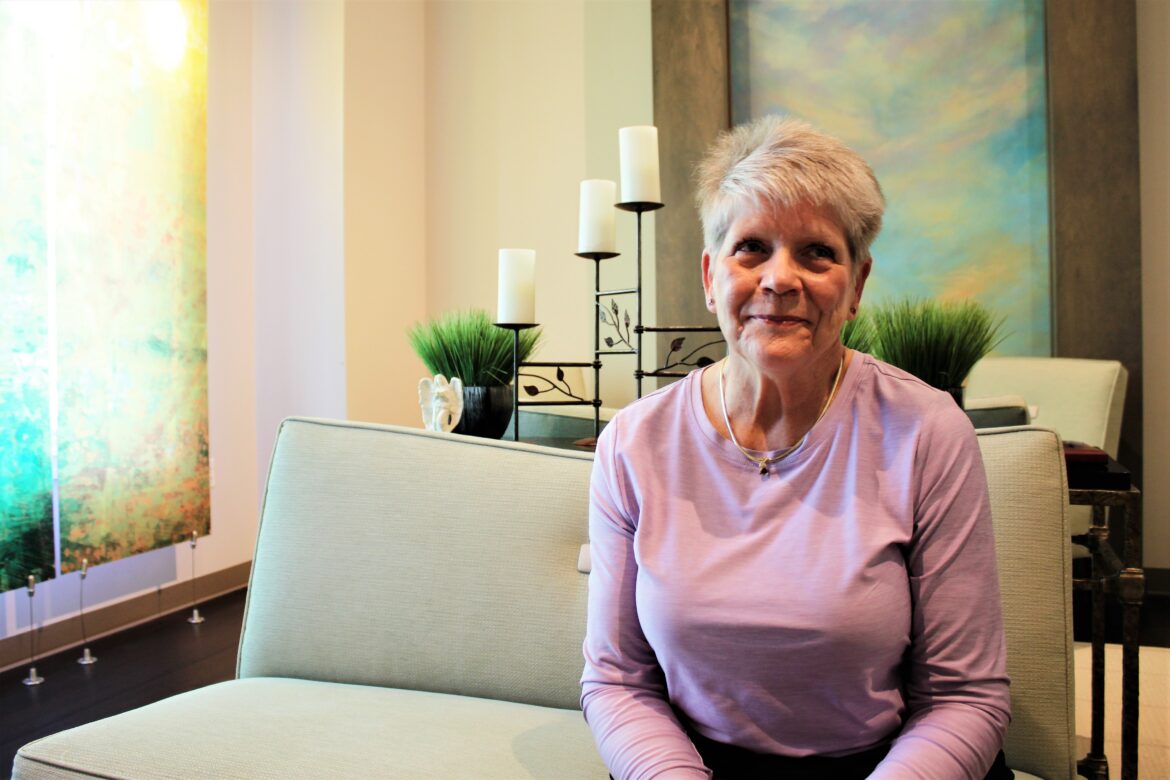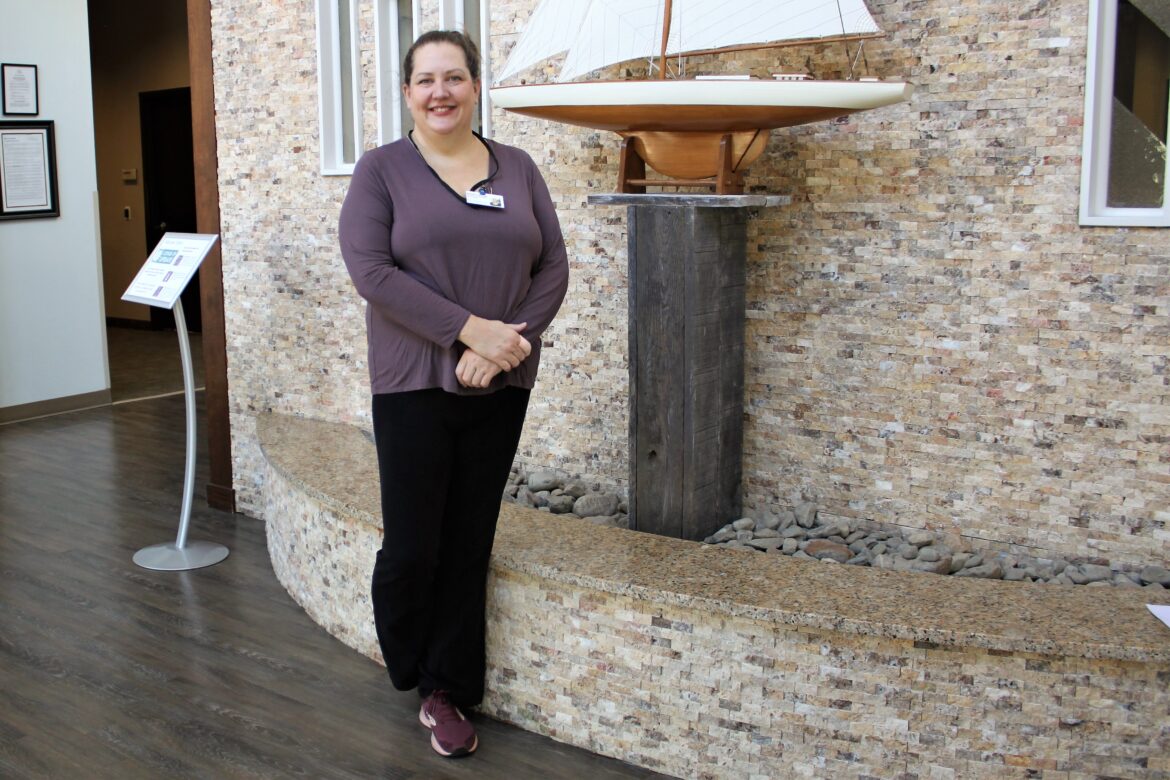
Sharon Downey sits in the Sanctuary in the Rebecca Fortney Inpatient Care Center before beginning her shift as a Compassionate Touch volunteer.
Hospice of the Chesapeake Volunteer Sharon Downey lost her father when she was 8. Back in those days, they didn’t allow children to be there in the final moments. Later in life, she was not able to be with her mother nor her grandmother when they died.
“I decided that if there is any way I can, I don’t want someone to be alone as they died,” she said. When her mother- and father-in-law died, she made sure she was there.
Downey carried that with her when it came time to do something with her days after retiring last year. She decided to become a compassionate care volunteer. “I always thought doing something like this would be something I would enjoy and bring comfort to others,” she said.
Not long after that, she trained with our Volunteer Department’s Integrative Arts program to be able to offer Compassionate Touch, a practice that combines gentle holds and strokes with specialized communication that is shown to relieve stress and anxiety. In January, she and a few others joined a pilot program in the Rebecca Fortney Inpatient Care Center where trained volunteers visit with patients to offer them the therapy.

Melissa Livingston stands in the lobby of the Rebecca Fortney Inpatient Care Center before she begins her shift as a Compassionate Touch volunteer.
The response has been overwhelmingly positive. Not only for the patients and families, but for the volunteers who help make it happen, like Melissa Livingston. She said that in healthcare when patients are touched, it’s often only for things like drawing blood for labs, changing bandages, etc. “Compassionate Touch is a way to have that human touch that’s non-medical. It does seem to help with patient anxiety,” Livingston said.
Our team members are working to rebuild this program after the period of isolation from the pandemic with other integrative arts, including reiki, therapeutic music, and pet visits. Compassionate Touch visits should be in full swing in the Charles County Inpatient Care Center by this summer. As we train more people in these practices, they can carry this forward from our inpatient care centers, bringing it to patients in their homes as Livingston does.
Downey said she is honored to have been able to give someone a few moments of comfort and to let them know they are not alone. “This is such a difficult thing, I’ve been through it myself, it’s so difficult. And so just to know that somebody took a little bit of time to be there for them, if that makes them feel better, it makes me feel better, too.”


